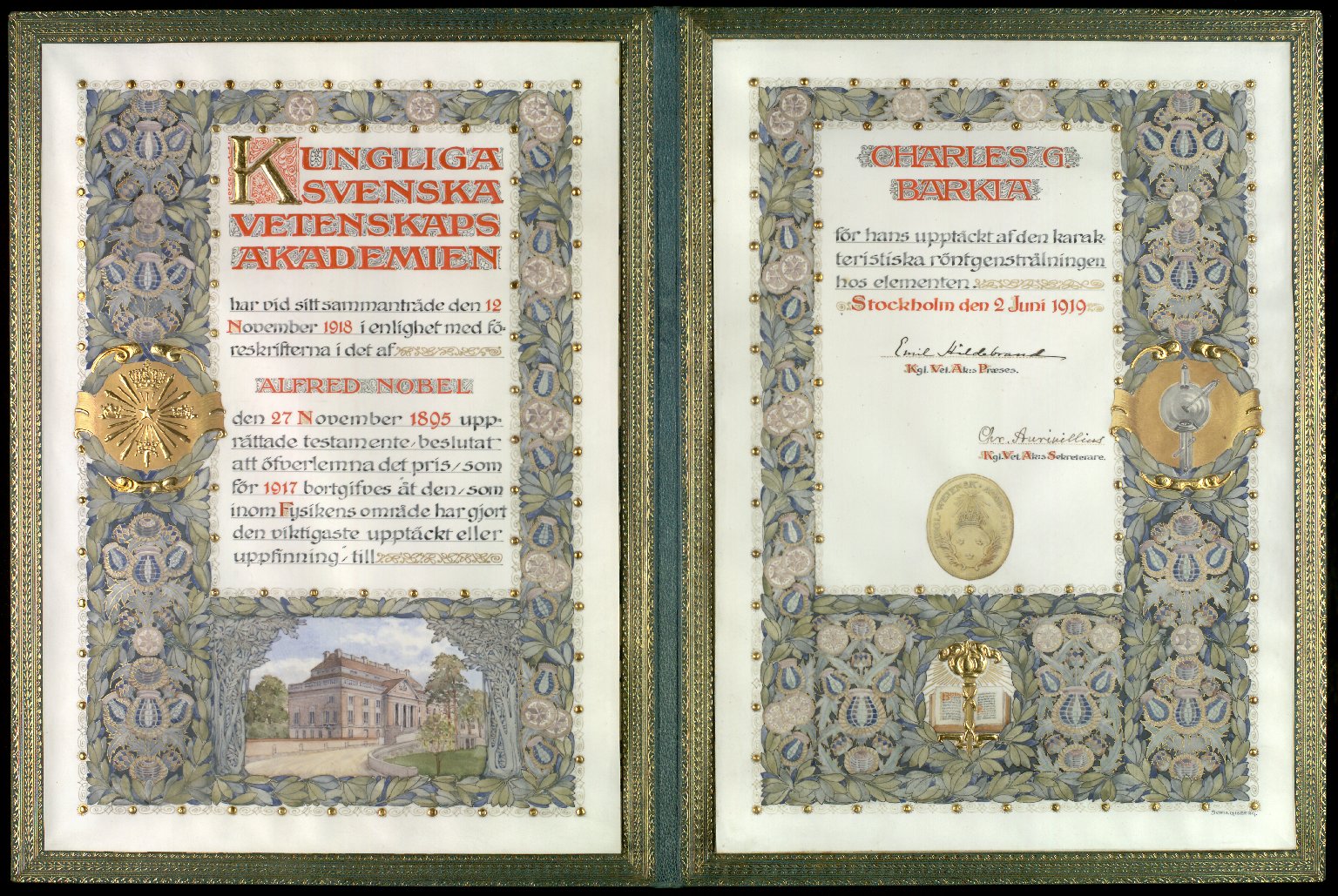Today, at the Hermitage of Braid, Principal Peter Mathieson will unveil a plaque commemorating Edinburgh University’s first Nobel Prize winner, physicist Charles Glover Barkla (1877–1944). Barkla is one of a dozen figures being honoured in this year’s round of Historic Environment Scotland’s Commemorative Plaque Scheme. The plaque will be mounted at Barkla’s former home of Braidwood, which is currently the Visitors Centre for the Hermitage of Braid Nature Reserve.

Born in Widnes, Lancashire, Barkla studied at University College Liverpool, and occupied a number of academic posts in Cambridge, London, and Liverpool, before being appointed to Edinburgh University’s Chair of Natural Philosophy (Physics) in 1913. He held the chair until his death in 1944, playing a prominent role in instituting honours degrees in pure science and developing the honours school of physics.
Barkla was awarded the 1917 Nobel Prize for Physics for his ground-breaking work with X-rays. Barkla conducted experiments that demonstrated that X-rays could be partially polarized, thereby proving that they were a form of transverse electromagnetic radiation with properties similar to light. With the First World War still raging, the announcement of the 1917 Nobel Prize was delayed until 12 November 1918. Barkla’s Nobel Banquet was held on 1 June 1920, and he gave his Nobel Lecture on 3 June 1920.
Edinburgh University Archives hold Barkla’s Nobel Prize citation (E96.23; see images below), together with a collection of congratulatory letters and telegrams from fellow scientists (E96.10). Our Barkla Papers (Coll-296) also contain lectures and lecture notes (E91.105).

Barkla’s Nobel citation
Barkla is also commemorated by a plaque on the University of Edinburgh’s Institute of Geography building (formerly occupied by Natural Philosophy). See here for more information: